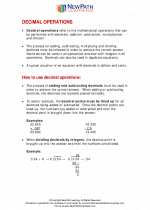Parabola
A parabola is a type of conic section that forms a U-shaped curve. It is defined as the set of all points that are equidistant from a fixed line (the directrix) and a fixed point (the focus).
Standard Form of a Parabola
The standard form of a parabola with vertex (h, k) and a vertical axis of symmetry is given by the equation:
y = a(x-h)^2 + k
Where (h, k) is the vertex of the parabola and 'a' determines the direction and width of the parabola. If 'a' is positive, the parabola opens upwards, and if 'a' is negative, the parabola opens downwards.
Key Features of a Parabola
- Vertex: The point (h, k) at which the parabola reaches its minimum or maximum value.
- Axis of Symmetry: The vertical line that passes through the vertex of the parabola.
- Focus: The fixed point that is equidistant from all points on the parabola.
- Directrix: The fixed line that is equidistant from all points on the parabola.
- Minimum/Maximum Value: The lowest or highest point of the parabola, located at the vertex.
Graphing a Parabola
To graph a parabola in standard form, start by plotting the vertex (h, k). Then use the value of 'a' to determine the direction and width of the parabola. If 'a' is positive, the parabola opens upwards, and if 'a' is negative, the parabola opens downwards. Use the axis of symmetry to plot additional points on the parabola.
Examples
Let's consider the parabola given by the equation y = 2(x-3)^2 + 1.
Vertex: (3, 1)
Axis of Symmetry: x = 3
Focus and Directrix can be calculated using the formulae:
Focus: (h, k + 1/(4a)) = (3, 1 + 1/(4*2)) = (3, 1.125)
Directrix: y = k - 1/(4a) = 1 - 1/(4*2) = 0.875
Study Guide
When studying parabolas, it is important to understand the standard form of the equation, as well as the key features such as the vertex, axis of symmetry, focus, and directrix. Practice graphing parabolas and identifying these key features from the equation. Additionally, understanding how 'a' affects the parabola's direction and width is crucial for mastering this topic.
Be sure to review the formulas for finding the focus and directrix of a parabola, and practice applying these formulas to different examples.
.◂Math Worksheets and Study Guides Seventh Grade. Decimal Operations

 Worksheet/Answer key
Worksheet/Answer key
 Worksheet/Answer key
Worksheet/Answer key
 Worksheet/Answer key
Worksheet/Answer key
